The mystery surrounding the bizarre ‘alien‘ mummies found in Peru has deepened after scientists claimed they discovered a fetus inside the womb of one of the ‘corpses’.
Dozens of mummified bodies were found in the Nazca desert in 2017 by a local named Leandro Rivera, sparking years of investigation into their origins.
The other-worldly figures were later found to have metal implants in their three-fingered hands and elongated heads.
However, other scientists who claimed to have analyzed the specimens determined the ‘mummies’ were dolls made from animal bones fused with modern glue.
But Dr David Ruiz Vela, a lead expert investigating the alleged remains, and journalist Jois Mantilla now revealed that they discovered a fetus inside a mummy named Montserrat while analyzing the remains at a radiology center in Lima.
The team believes Montserrat died 1,200 years ago when she was less than 30 weeks pregnant.
CT scans captured the ‘fetus’ lying on its back, with its head down near the belly area and chest with its arms closer to the pelvic region.
Scientists suggested its bones were still soft, just starting to harden, when Montserrat died, leaving parts of the spine and ribs unable to fuse together.
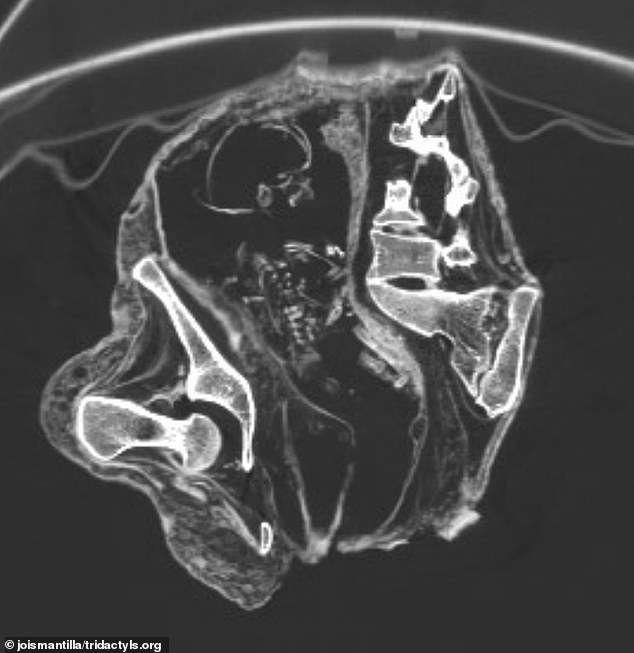
The mystery surrounding the bizarre ‘ alien ‘ mummies found in Peru has deepened after scientists said they discovered a fetus inside the womb of one of the ‘corpses’. CT scans (pictured) captured the fetus lying on its back
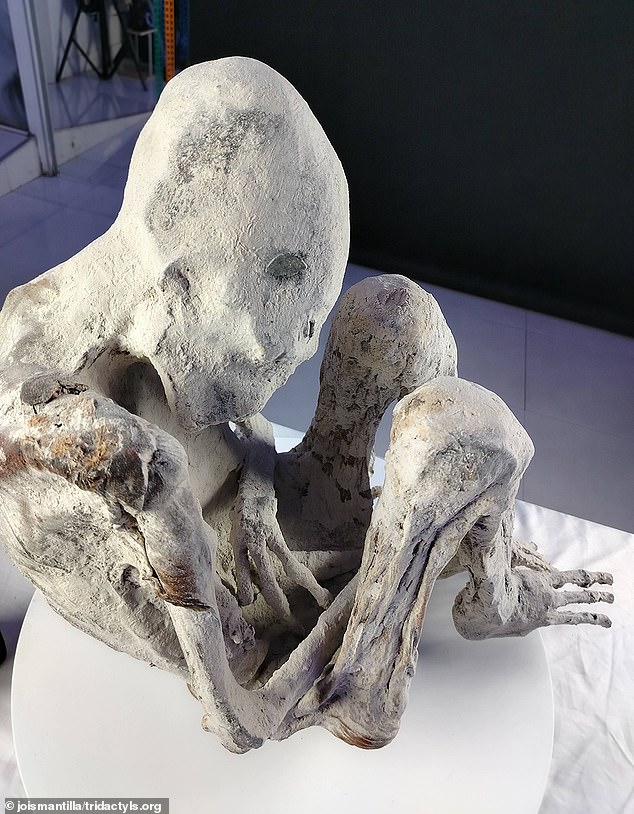
Scientists said they found the fetus inside an alien mummy they named Montserrat, who they claim was less than 30 weeks pregnant when she died 1,200 years ago
They determined the age of the ‘fetus’ based on the size of its femur, 43 millimeters long, which is used to estimate gestational age in prenatal ultrasounds, suggesting it was less than 30 weeks.
The fetus was discovered after Jois Mantilla, who has become dedicated to proving the mummies are real, noticed how Montserrat’s hands were close around her stomach.
‘I observed the position of the hands, as if she had wanted to protect her gestating belly. One hand above and one below,’ he told Daily Mail. ‘The abdomen dried out, lost hydration, and became almost flat, but the hands remained in that position.’
The team refers to the mummies as ‘tridactyl’ due to their three-fingered hands, an unusual trait that has fueled speculation about their origin, including the possibility of extraterrestrial or reptilian ancestry.
Mantilla noted that the organs identified so far show anatomical similarities to those of humans, though he emphasized the need for deeper, on-site analysis to draw reliable conclusions.
Scans suggested that the fetus had dried out within the womb over time, he said.
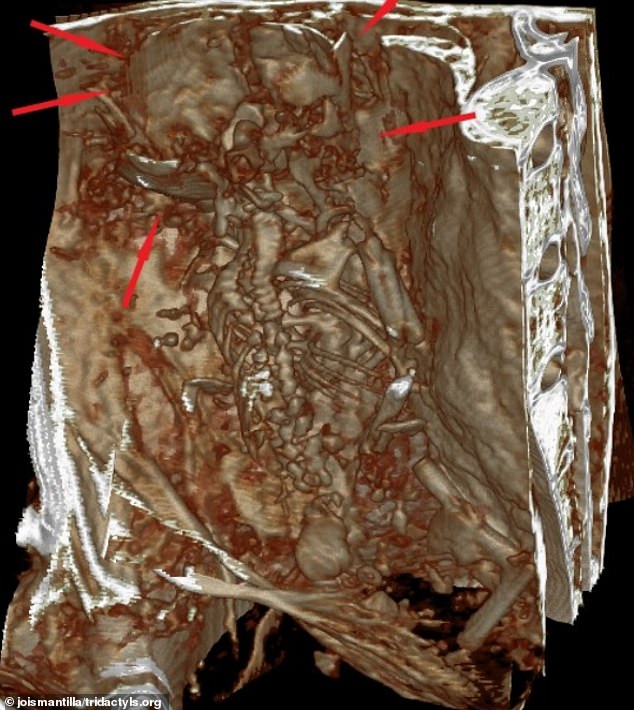
The CT scan claims to show details of the fetus’ bones, capturing its ribs, legs and skull
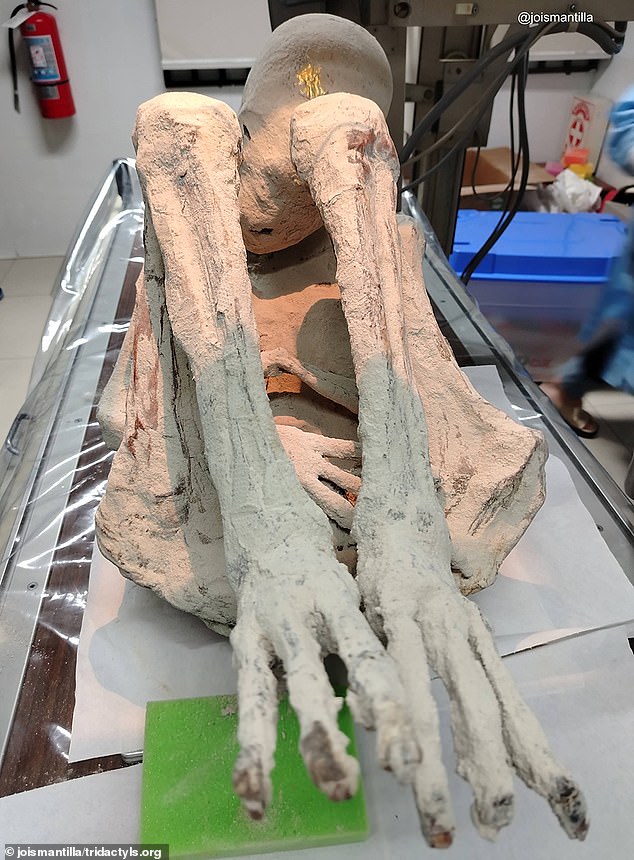
Experts discovered a fetus inside a mummy named Montserrat while analyzing the remains at a radiology center in Lima
As the tissue shrank, the muscles in the uterus retained their general shape, but the soft, undeveloped skull and facial bones shifted.
When scientists digitally reconstructed the fetus, they found its face had turned backward.
At the time of death, the fetal bones were still soft and not fully formed, making them more vulnerable to distortion during mummification, according to the researchers.
Scientists said this explains why the spine and ribs appear broken or misaligned in the scans.
Some bone parts, particularly the growth plates at the ends, are not visible at all in the CT images.
When asked whether the fetus could have been a hybrid, half human and half tridactyl, Dr Jose Zalce, former director of the Mexican Navy Medical Department and a leader expert in the investigation, said such a determination would require DNA testing.
‘For now, the only clear anatomical similarity between the fetus and the mother is the tridactyl structure of the hands and feet,’ he noted.
The team estimated that Montserrat died between the ages of 16 and 25. She stood approximately five feet, three inches tall and had implants in her hands, chest, and head.
According to the researchers, the implants appear to have a density similar to metal.
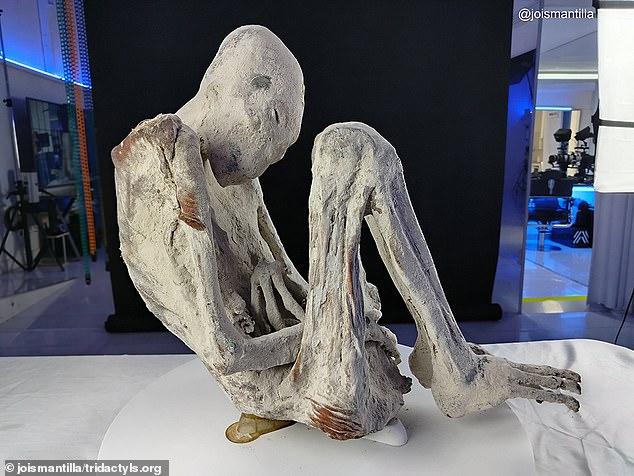
In the case of Montserrat (pictured), researchers hypothesized that the cause of death was a significant trauma sustained over an extended period
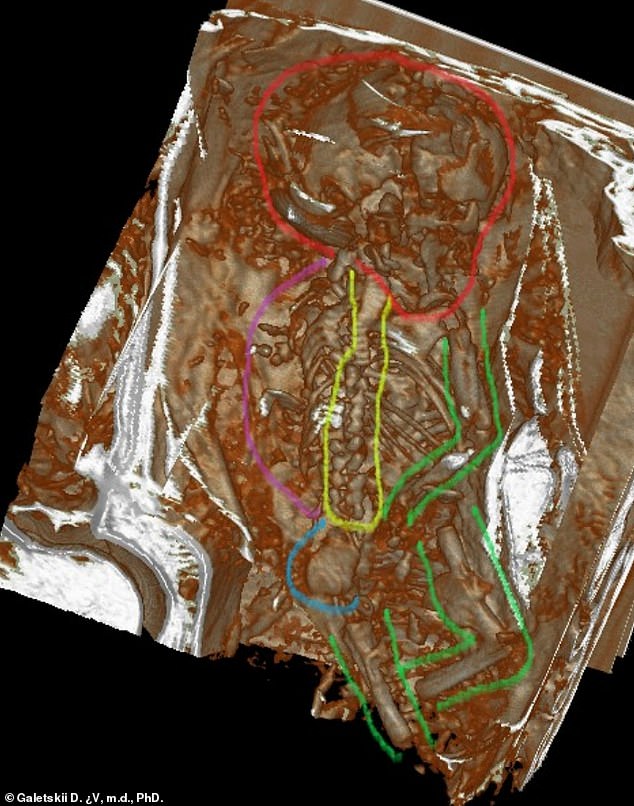
When scientists reconstructed the fetus, they saw that the face had turned backward. At the time of death, the bones were still soft and not fully developed
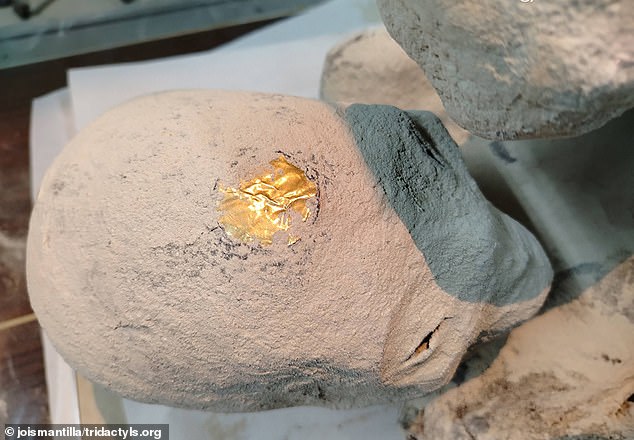
Scientists also snapped an image of a metal-like object on the top of Montserrat’s head, but they do not understand the purpose of the implant yet
A visible object on Montserrat’s head appears to have been implanted while she was still alive, according to the scientists, who noted that the skin seems to have grown around the implant.
The team also discovered metallic plates throughout the bodies of other mummies, some located inside, covering bones and others attached externally to the skin.
These implants appear to be ‘biofunctional,’ as they show no signs of rejection by the body.
‘These polymetallic plates were analyzed using light-based measurement techniques and found to contain an alloy of copper, cadmium, osmium, aluminum, gold, and silver, said Dr Zalce
‘Notably, the silver is over 95 percent pure, a rarity in nature. Cadmium and osmium, both relatively modern discoveries, are materials currently used in satellite communications and aerospace structures.’
The mystery surrounding these so-called tridactyl mummies began in 2017, when ufologist Jaime Maussan and a group of researchers introduced the mummies to the world, revealing strange three-fingered, mummified humanoids with elongated skulls near the Nazca Lines in Peru.
The bodies were found covered in white powder, which the team said was used to preserve the remains.
Five years later, Maussan brought the remains to Mexico’s Congress twice to argue that they were the real remains of non-human beings.
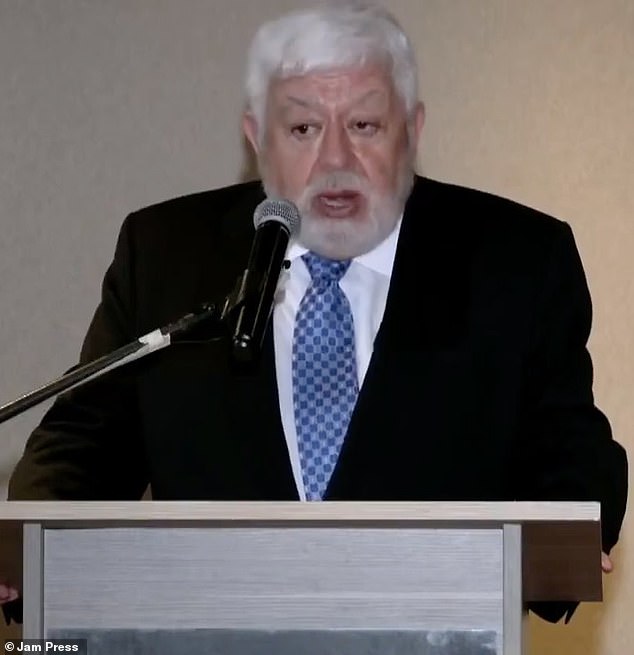
The mystery surrounding these so-called tridactyl mummies began in 2017, when ufologist Jaime Maussan (pictured) and a group of researchers introduced the mummies to the world
During his second appearance, a panel of doctors supported his claim, saying the bodies were real, once-living organisms. Some researchers said they had studied up to five similar specimens over four years.
However, outside experts have raised serious doubts.
Forensic archaeologist Flavio Estrada, who led the analysis, said the claims that the specimens coming from another world are ‘totally false’.
‘The conclusion is simple: they are dolls assembled with bones of animals from this planet, with modern synthetic glues, therefore they were not assembled during pre-Hispanic times,’ he said in January 2024.
‘They are not extraterrestrials; they are not aliens.’
However, a former Colorado prosecutor and current defense attorney, who has examined one of the mummies, is also a true believer.
Joshua McDowell said: ‘The bodies studied by Estrada were not related to any specimen that we have studied.
‘They were folk dolls made to look like [mummies] confiscated at the airport.’









